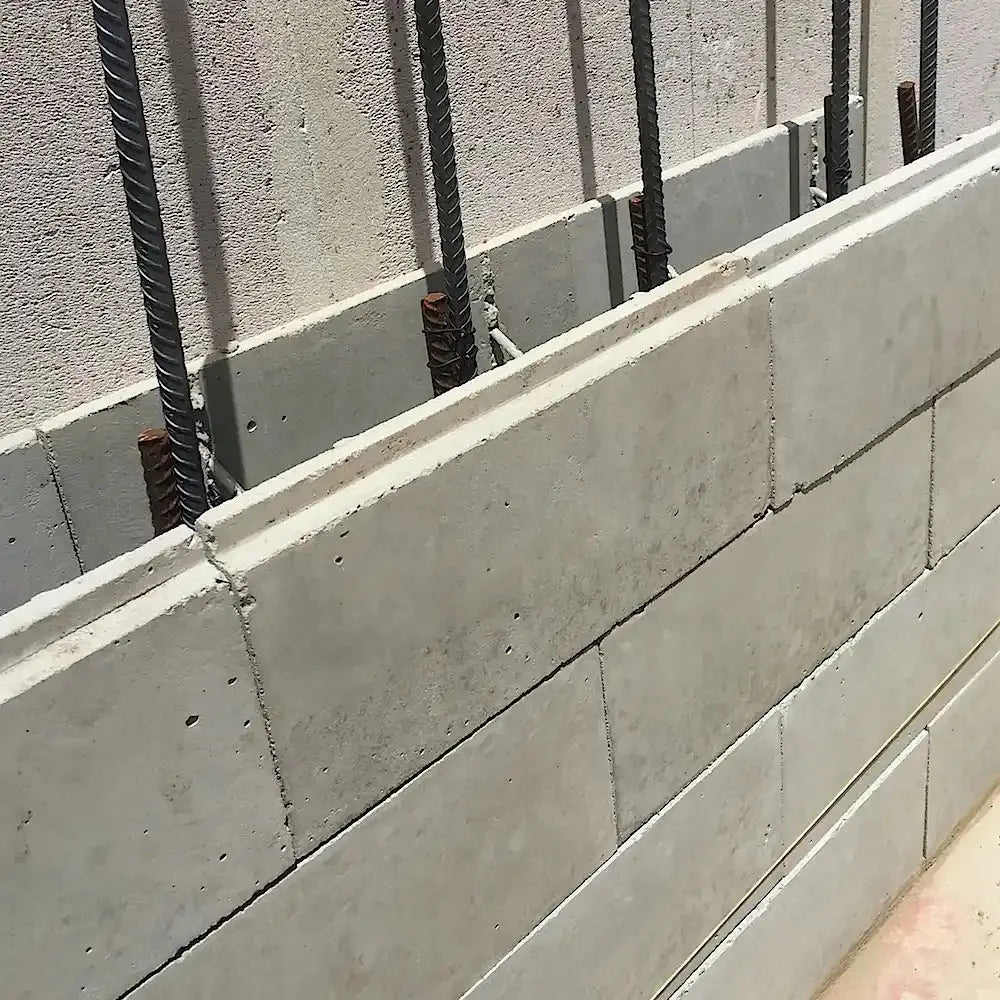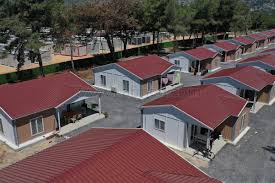Prefabricated Construction in Ghana (2025)
LATEST NEWS
Prefabricated Construction in Ghana (2025): Innovations, Challenges, and Global Developments
Ghana's construction industry is experiencing a transformative shift in 2025, with prefabricated construction emerging as a pivotal solution to address the nation's housing deficit and infrastructure needs. This approach offers rapid, cost-effective, and sustainable building methods, aligning with Ghana's urbanization and development goals.
Innovations Driving Prefabricated Construction
1. Sustainable Materials and Technologies
Ghanaian innovators are leading in sustainable construction materials:
Willow Technologies is at the forefront of sustainable construction innovation in Ghana. The company specializes in repurposing agricultural waste, such as rice husks, coconut shells, and sugarcane bagasse, into high-performance building materials.
Through advanced processing techniques, these otherwise discarded materials are transformed into durable, water-resistant roofing tiles, wall panels, and insulation components that are not only eco-friendly but also cost-effective.

This approach reduces the environmental burden of agricultural byproducts, minimizes the demand for conventional construction materials like cement and metal, and supports circular economy principles. By turning waste into valuable construction inputs, Willow Technologies is addressing both the country’s waste management issues and its growing housing and infrastructure needs, especially in rural and peri-urban communities where access to affordable building materials is limited. Their work also promotes green jobs and contributes to Ghana’s climate resilience goals.
• Nelplast is a pioneering Ghanaian company tackling two major challenges simultaneously: plastic waste pollution and the demand for affordable infrastructure. By converting plastic waste, collected from homes, streets, and landfills, into robust pavement blocks, Nelplast offers an innovative solution that is both environmentally friendly and economically viable.
These pavement blocks are highly durable, weather-resistant, and suitable for roads, walkways, and drainage systems, especially in flood-prone areas. The company’s process significantly reduces the volume of plastic waste entering Ghana’s waterways and landfills, helping to combat pollution and climate-related hazards. Nelplast’s model also empowers local waste collectors, creating job opportunities along the recycling value chain.

With strong government and community partnerships, the company continues to scale its operations, making sustainable infrastructure accessible while championing a cleaner, greener Ghana.
• The Building and Road Research Institute (BRRI), a leading research arm under Ghana’s Council for Scientific and Industrial Research (CSIR), has made significant strides in developing alternative building materials tailored to local needs. One of its most impactful innovations is Pozzolana cement, a supplementary cementitious material produced from abundant local resources such as clay, palm kernel shells, and volcanic ash. This eco-friendly alternative can partially replace conventional Portland cement in construction projects, reducing Ghana’s dependence on costly imported materials.
Pozzolana cement not only lowers construction costs but also significantly cuts carbon emissions associated with cement production, a major contributor to global greenhouse gases. Its development supports sustainable construction by utilizing readily available raw materials, minimizing energy consumption during production, and enhancing the durability of buildings, particularly in humid and tropical environments.
BRRI’s work aligns with national goals to promote green building practices and offers a scalable solution for addressing Ghana’s housing deficit in a cost-effective and environmentally responsible way.
2. Smart Modular Homes
• Smart modular homes are rapidly gaining popularity in Ghana as a forward-thinking solution to the country’s growing housing demands and energy challenges. These prefabricated structures are designed with energy efficiency at their core, integrating features such as solar panels, smart home appliances, rainwater harvesting systems, and high-performance insulation made from sustainable materials.
Built in sections off-site and assembled quickly on location, smart modular homes drastically reduce construction time, making them ideal for urban centres like Accra, Kumasi, and emerging peri-urban areas where the pressure for affordable, livable housing is high.

Their flexible design allows for easy customization based on climate, location, and user needs, accommodating Ghana’s varied terrains, from coastal zones to forest belts. Additionally, these homes often include digital connectivity options and energy monitoring systems, empowering homeowners to track and manage their electricity and water usage efficiently.
As Ghana pushes toward green energy and digital transformation, smart modular housing aligns well with national goals for sustainable urban development, offering a scalable, eco-conscious alternative to traditional construction.
3. Interlocking Block Systems
Interlocking blocks are revolutionizing the building industry in Ghana by offering a more sustainable, cost-effective, and efficient alternative to traditional brick-and-mortar construction. These specially designed blocks fit tightly together like puzzle pieces, eliminating the need for mortar and significantly reducing the use of cement and water during construction. Their growing popularity stems from their strength, structural stability, and ease of assembly, which allows for faster build times and lower labour costs.

Beyond their economic benefits, interlocking blocks support sustainable construction by minimizing material waste and environmental impact. Many of these blocks are made from compressed earth or recycled materials, making them an eco-friendly option for both rural and urban housing projects. Their inherent flexibility and durability also make them suitable for earthquake-prone or flood-prone areas, as they can absorb shocks and movements more effectively than rigid masonry walls. In Ghana, where affordable and climate-resilient housing is in high demand, interlocking block technology is proving to be a game changer, empowering communities to build stronger, safer, and greener homes with local resources.
Challenges Facing Prefabricated Construction
1. Limited Awareness and Cultural Acceptance
Many Ghanaians associate prefabricated homes with temporary or low-quality structures. This perception hinders widespread adoption, despite the benefits of modular construction.
2. High Initial Investment and Infrastructure Limitations
Setting up prefabrication facilities requires significant capital investment. Additionally, transporting modular units to remote areas is challenged by inadequate road networks and infrastructure.
3. Regulatory and Skilled Labour Constraints
The lack of a well-established regulatory framework for modular housing complicates the approval process for new projects. Moreover, there's a shortage of skilled labour trained in prefabricated construction techniques.
Global Developments and Ghana's Position
Globally, prefabricated construction is recognized for its efficiency and sustainability. In Ghana, events like the Build Expo Ghana and the Africa Build Show are platforms showcasing the latest in construction technology and fostering international partnerships.

The Ghanaian government's initiatives, such as the "One District, One Factory" policy, aim to boost local manufacturing, including prefabricated construction components. These efforts are crucial in addressing the country's housing deficit and promoting economic growth.
Conclusion
Prefabricated construction in Ghana is on the verge of transformative growth, propelled by advancements in innovative building materials, the rising demand for smart and affordable housing solutions, and a growing commitment from government bodies through supportive policies and initiatives. These modern construction methods offer numerous benefits, including faster build times, reduced waste, cost efficiency, and improved quality control, making them an attractive alternative to traditional construction techniques.
Despite its potential, the widespread adoption of prefabricated construction faces several hurdles. Cultural perceptions often associate prefab structures with low quality or temporary housing, creating resistance among potential homeowners and developers. Additionally, limited access to investment capital and financing options can hinder the expansion of local prefab industries. Infrastructure gaps, such as poor road networks and inconsistent access to power, further complicate logistics and increase production costs. Regulatory challenges, including outdated building codes and a lack of clear standards for prefab construction, also pose significant obstacles to growth.

Addressing these challenges requires a coordinated approach involving government agencies, private sector players, financial institutions, and educational institutions. Public awareness campaigns and pilot projects showcasing the benefits of prefabricated housing can help shift perceptions and build trust among communities. Meanwhile, investments in infrastructure and the modernization of regulatory frameworks will create a more enabling environment for the industry to thrive.
With continued collaboration among stakeholders and a strategic focus on innovation, sustainability, and inclusivity, prefabricated construction can emerge as a key driver in shaping Ghana’s urban development. It holds the potential to provide efficient, scalable, and environmentally friendly housing solutions that meet the needs of a growing population and support the country’s long-term development goals.
